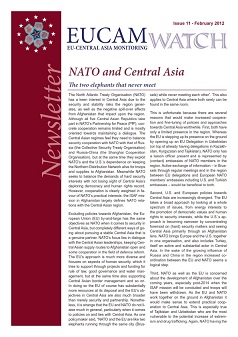NATO and Central Asia
NATO and Central Asia
Author(s): Jos Boonstra, Alexander Cooley, Marlène Laruelle, Sébastien Peyrouse
Contributor(s): Jos Boonstra (Editor), Nafisa Hasanova (Editor), Tika Tsertsvadze (Editor)
Subject(s): International relations/trade, Security and defense, Military policy, Geopolitics, Peace and Conflict Studies
Published by: CEPS Centre for European Policy Studies
Keywords: The North Atlantic Treaty Organisation; NATO; Central Asia; security; stability; peace and conflict studies; military policy;
Summary/Abstract: The North Atlantic Treaty Organisation (NATO) has a keen interest in Central Asia due to the security and stability risks the region generates, as well as the negative spill-over effects from Afghanistan that impact upon the region. Although all five Central Asian Republics take part in NATO’s Partnership for Peace (PfP), concrete cooperation remains limited and is mostly oriented towards maintaining a dialogue. The Central Asian regimes feel they need to balance security cooperation with NATO with that of Russia (the Collective Security Treaty Organisation) and Russia-China (the Shanghai Cooperation Organisation), but at the same time they exploit NATO’s and the U.S.’s dependence on keeping the Northern Distribution Network alive for troops and supplies to Afghanistan. Meanwhile NATO seeks to balance the demands of hard security interests with not losing sight of Central Asia’s deploring democracy and human rights record. However, cooperation is clearly weighted in favour of NATO’s practical interests: the ISAF mission in Afghanistan largely defines NATO relations with the Central Asian region.
Series: EUCAM Watch
- Page Count: 7
- Publication Year: 2012
- Language: English
- Content File-PDF

